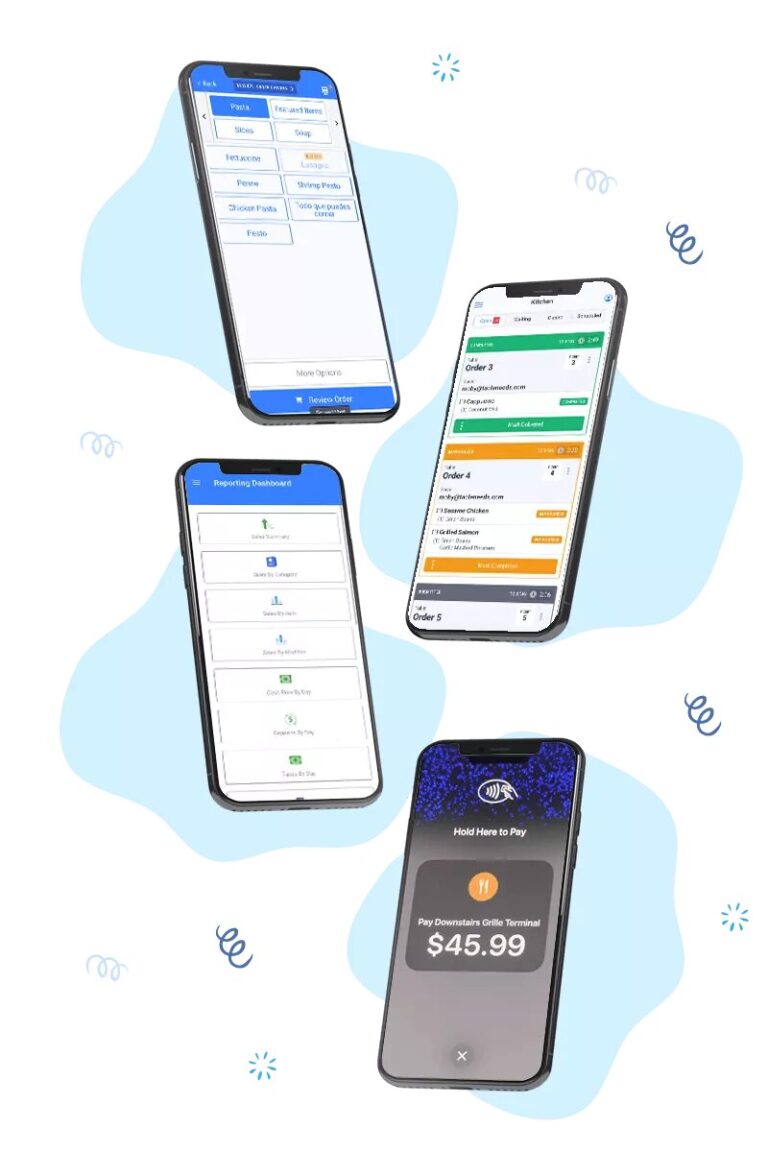Mobile Food Truck POS Systems: The Rolling Engine of Modern Culinary Entrepreneurship pickup.truckstrend.com
In the dynamic and fast-paced world of mobile gastronomy, efficiency is not just a virtue—it’s a necessity. Food trucks operate in a unique environment, demanding agility, speed, and reliability from every tool in their arsenal. At the heart of this operational efficiency lies the Mobile Food Truck Point-of-Sale (POS) System. Far more than just a glorified cash register, these specialized POS systems are the digital backbone for modern food truck businesses, enabling seamless order processing, robust inventory management, insightful sales tracking, and an overall enhanced customer experience. For any aspiring or existing food truck owner, understanding and leveraging the right mobile POS system is no longer an option but a critical investment that can dictate success in a highly competitive market.
Why a Dedicated Food Truck POS is Crucial: Unleashing Operational Excellence
Mobile Food Truck POS Systems: The Rolling Engine of Modern Culinary Entrepreneurship
The traditional cash register simply cannot keep pace with the demands of a bustling food truck. A dedicated mobile food truck POS system offers a suite of functionalities that are indispensable for smooth operations and sustainable growth.
- Streamlined Order Taking & Payment Processing: Speed is paramount in a food truck line. A good POS allows for rapid order entry, customization (e.g., "no onions," "extra cheese"), and quick payment processing, including credit/debit cards, mobile payments (Apple Pay, Google Pay), and even contactless options. This reduces wait times, boosts customer satisfaction, and maximizes sales during peak hours.
- Robust Inventory Management: Knowing what you have, what you need, and what’s selling is vital. A POS system can track ingredients in real-time, alert you when stock is low, and even help identify popular versus slow-moving items. This minimizes waste, prevents stockouts, and optimizes purchasing.
- Insightful Sales Reporting & Analytics: Beyond just processing transactions, a POS system captures invaluable data. Daily, weekly, and monthly sales reports can highlight peak sales times, popular menu items, average transaction values, and employee performance. This data empowers owners to make informed decisions about staffing, menu adjustments, and marketing strategies.
- Enhanced Customer Relationship Management (CRM): Many modern POS systems offer built-in loyalty programs, allowing food trucks to reward repeat customers, offer special promotions, and collect valuable customer data. This fosters customer loyalty and encourages repeat business.
- Mobility & Portability: Designed for on-the-go businesses, these systems are compact, lightweight, and can operate from a tablet or smartphone, making them perfect for limited truck space and diverse locations.
- Offline Capabilities: Internet connectivity can be unreliable at various event locations or remote spots. A crucial feature for food truck POS systems is an offline mode, allowing transactions to be processed even without an internet connection and then syncing the data once connectivity is restored.

Key Features to Look for in a Food Truck POS System
Choosing the right POS system involves evaluating both hardware and software components to ensure they meet the unique demands of a mobile business.
Hardware Considerations: Built for the Road
- Tablet/Mobile Device Compatibility: Most modern food truck POS systems are app-based, running on iPads, Android tablets, or smartphones. Ensure the chosen system is compatible with durable, user-friendly devices.
- Portable Printer: A compact, thermal receipt printer is essential for providing customers with receipts. Bluetooth or Wi-Fi enabled models are ideal.
- Cash Drawer: Even with digital payments, a secure cash drawer is necessary for cash transactions and change.
- Card Reader: Must support EMV chip cards, magstripe, and increasingly, NFC contactless payments (Apple Pay, Google Pay) to accommodate diverse customer preferences. Look for readers that are durable and can withstand varying temperatures.
- Durable Build: Food trucks are subject to vibrations, temperature fluctuations, and occasional spills. Hardware should be rugged and designed to withstand these conditions.
- Power Solutions: Battery-powered devices and efficient power management are crucial, as consistent power sources can be challenging to secure on the go.


Software Functionalities: The Brains of the Operation
- Intuitive User Interface (UI): Staff turnover can be high in food service. A simple, easy-to-learn interface minimizes training time and reduces errors.
- Menu Management: Easily add, edit, and categorize menu items. Support for modifiers (e.g., "add bacon," "no pickles"), combo meals, and daily specials is critical.
- Order Customization: The ability to easily customize orders, add notes, and manage complex requests.
- Split Payments & Tip Management: Essential for groups and for ensuring accurate tip allocation for staff.
- Employee Management: Track employee hours, sales performance, and manage access permissions.
- Loyalty Programs: Integrated tools to create and manage customer loyalty and reward programs.
- Multi-Location Support: If you operate multiple trucks or plan to expand, ensure the system can manage inventory and sales across all locations.
- Offline Mode: As mentioned, non-negotiable for reliable operation when internet access is spotty or unavailable.
- Comprehensive Reporting: Real-time access to sales data, inventory levels, customer trends, and employee performance.
- Integrations: Compatibility with other essential business tools like accounting software (e.g., QuickBooks, Xero), online ordering platforms (e.g., DoorDash, Uber Eats), and payroll services.
Setting Up Your Food Truck POS: A Step-by-Step Guide
Implementing a new POS system might seem daunting, but breaking it down into manageable steps makes the process straightforward.
- Choose the Right System: Based on your budget, feature requirements, and business size, select a POS provider that aligns with your needs. Research reviews and compare offerings.
- Acquire Necessary Hardware: Purchase or lease the tablets, card readers, printers, and cash drawers recommended by your chosen POS provider.
- Install Software/App: Download the POS application onto your chosen devices.
- Configure Menu and Pricing: Input your entire menu, including item names, prices, descriptions, modifiers, and categories. This is a critical step for smooth order entry.
- Set Up Payment Processing: Integrate your chosen payment processor (often bundled with the POS system) and ensure your card reader is properly configured for all payment types.
- Train Staff: Conduct thorough training sessions for all employees who will be using the system. Emphasize common scenarios, troubleshooting tips, and how to use all features effectively.
- Test Thoroughly: Before your first service, run mock orders, process various payment types, and test all functionalities to identify and resolve any issues.
Navigating Challenges & Finding Solutions
Food trucks face unique operational challenges, and your POS system needs to be part of the solution, not another problem.
- Connectivity Issues: The most common challenge. Solution: Prioritize POS systems with robust offline capabilities. Invest in a reliable mobile hotspot (e.g., 5G hotspot) as a primary or backup internet source.
- Power Management: Keeping devices charged throughout long shifts. Solution: Choose hardware with long battery life. Invest in high-capacity portable power banks and ensure your truck’s electrical system can support all devices.
- Space Constraints: Limited counter space for hardware. Solution: Opt for compact, integrated hardware solutions. Tablet-based systems with small, Bluetooth peripherals are ideal.
- Security Concerns: Protecting sensitive customer and business data. Solution: Ensure your POS provider is PCI compliant, uses encryption for transactions, and offers robust security features like role-based access control. Regularly update software.
- Training & Adoption: Staff resistance to new technology. Solution: Select a system with an incredibly user-friendly interface. Provide comprehensive, hands-on training and highlight how the new system simplifies their work.
Tips for Maximizing Your Food Truck POS Investment
Once you’ve got your POS up and running, here’s how to ensure you’re getting the most out of it:
- Regular Software Updates: Keep your POS software updated to access new features, security patches, and performance improvements.
- Utilize Reporting Features: Don’t just process transactions. Dive deep into your sales reports to identify trends, optimize your menu, and refine your marketing efforts.
- Implement Loyalty Programs: Actively encourage customers to join your loyalty program to build a strong customer base and drive repeat business.
- Train Staff Continuously: As your menu or system features evolve, provide ongoing training to ensure staff proficiency and reduce errors.
- Leverage Integrations: Connect your POS to your accounting software, online ordering platforms, and other tools to streamline back-office operations and avoid manual data entry.
- Monitor Customer Feedback: Pay attention to feedback regarding your payment process or ordering experience. Your POS should enhance, not hinder, the customer journey.
Mobile Food Truck POS Systems: Price Guide
The cost of a mobile food truck POS system can vary significantly based on the provider, included features, hardware needs, and payment processing fees. Here’s a general overview:
| Component / Provider Type | Typical Cost Range | Description |
|---|---|---|
| Software Subscription | $49 – $150+/month | Monthly fee for using the POS software. Varies by features and number of terminals. |
| Basic Hardware Bundle | $300 – $1,000 | Includes a tablet stand, basic card reader, and receipt printer. |
| Advanced Hardware Bundle | $1,000 – $2,500+ | Includes a durable tablet, advanced EMV/NFC reader, high-speed printer, cash drawer, and potentially a kitchen display system (KDS). |
| Transaction Fees | 1.9% – 2.9% + $0.10 – $0.30/transaction | Percentage of each card transaction + a small flat fee. Can vary by card type. Some providers offer flat rates. |
| Setup/Installation Fees | $0 – $500 | One-time fee for initial setup, training, or dedicated support. Often waived by popular providers. |
| Internet Connectivity | $20 – $80/month | Cost for a reliable mobile hotspot or cellular data plan. |
Note: Many providers offer custom quotes based on specific business needs. It’s crucial to get a detailed breakdown of all potential costs, including hidden fees.
Frequently Asked Questions (FAQ)
Q1: What is a mobile food truck POS system?
A1: It’s a specialized Point-of-Sale system designed for food trucks, typically running on tablets or smartphones, enabling quick order taking, payment processing, inventory management, and sales reporting on the go.
Q2: Do I need an internet connection for my food truck POS?
A2: While an internet connection is ideal for real-time syncing and certain features, many modern food truck POS systems offer an "offline mode." This allows you to process transactions without an internet connection, syncing data once connectivity is restored.
Q3: How much does a food truck POS system cost?
A3: Costs vary widely. Expect monthly software subscriptions ranging from $49 to $150+, hardware bundles from $300 to $2,500+, and transaction fees typically between 1.9% and 2.9% plus a small flat fee per transaction.
Q4: Can a food truck POS handle multiple payment types?
A4: Yes, a good food truck POS system supports various payment methods, including cash, major credit/debit cards (EMV chip, magstripe), and contactless payments like Apple Pay and Google Pay.
Q5: Is it difficult to set up a food truck POS?
A5: Most modern POS systems are designed to be user-friendly. While initial setup involves configuring your menu and payment processing, the interfaces are generally intuitive, and providers often offer support and training resources.
Conclusion
The mobile food truck POS system is an indispensable tool for success in today’s mobile culinary landscape. It transforms what could be a chaotic operation into a streamlined, efficient, and data-driven business. By optimizing order flow, managing inventory, providing invaluable sales insights, and enhancing the customer experience, a robust POS system empowers food truck owners to focus on what they do best: creating delicious food and serving happy customers. Investing in the right system isn’t just about processing transactions; it’s about building a resilient, adaptable, and profitable business that’s ready to roll with the times.



